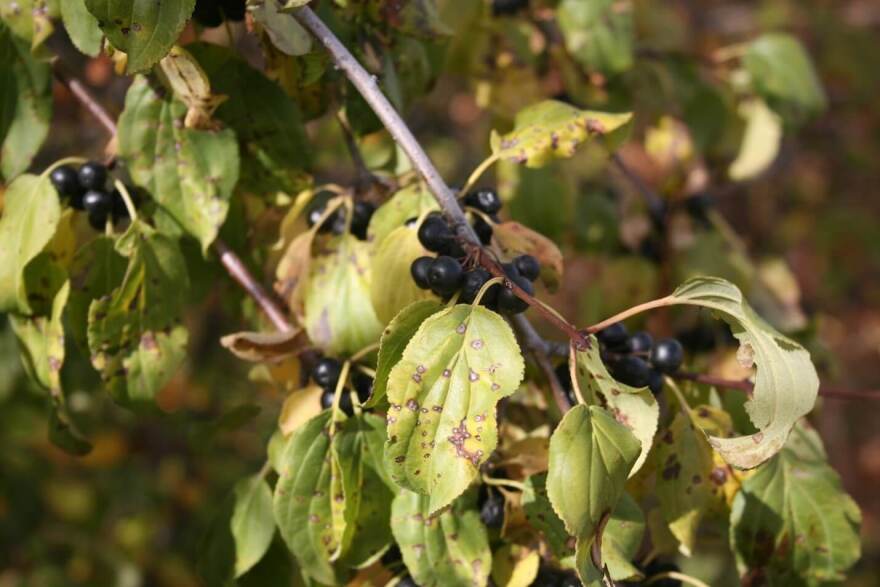There is not much green on the landscape this time of year. I have, however, noticed some small trees or large shrubs, often in dense thickets, that are still green. They are thickets of buckthorn (Rhamnus cathartica). This native to Eurasia and northern Africa was introduced to North America back in the early 1800’s and has become quite invasive.

Buckthorn is a much branched, thorny, deciduous, tall shrub or small tree that grows to 15 feet or more. For identification, look for small thorns at the tips of new twigs and the oval, dark green toothed leaves about 3 inches long. Also note that buckthorn produces separate male and female plants, the fruits on the females often persisting and small, dark (almost black), about a quarter of an inch in diameter, and produced individually or in clusters near the ends of new twigs. Male plants of course do not produce fruits.
Not only does buckthorn stay green longer than most other trees and shrubs, it greens up earlier as well. That, in part, is why it has been so invasive. Because it greens up so early, it shades out the vegetation below. Except for the larger trees above, buckthorn basically becomes the only thing growing below. It also sprouts profusely, thus forms impenetrable thickets that displace the native plants.

O.A. Stevens in his Handbook of North Dakota Plants from 1963 noted that buckthorn was well established in Fargo and perhaps other places. Today the plant has been documented in over 25 counties across the state.
Buckthorn is now listed as a noxious weed in Montana, Saskatchewan, Manitoba, Minnesota, and elsewhere. Some of you may have heard about the problems associated with buckthorn in Minnesota. The plant has not generated much concern in North Dakota though. I suspect that is because it isn’t an agronomic weed, is quite inconspicuous, so hasn’t caught our attention. But the plant has the potential to severely impact the ecological integrity of our forests and woodlands.
So be on the lookout for this invasive plant. And if you can, get rid of it!
-Chuck Lura


